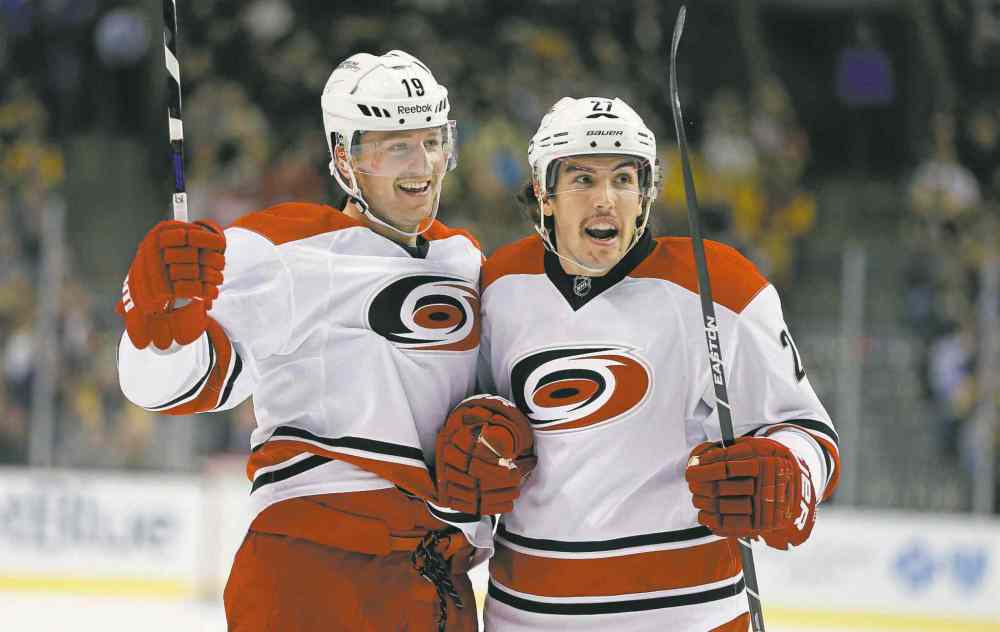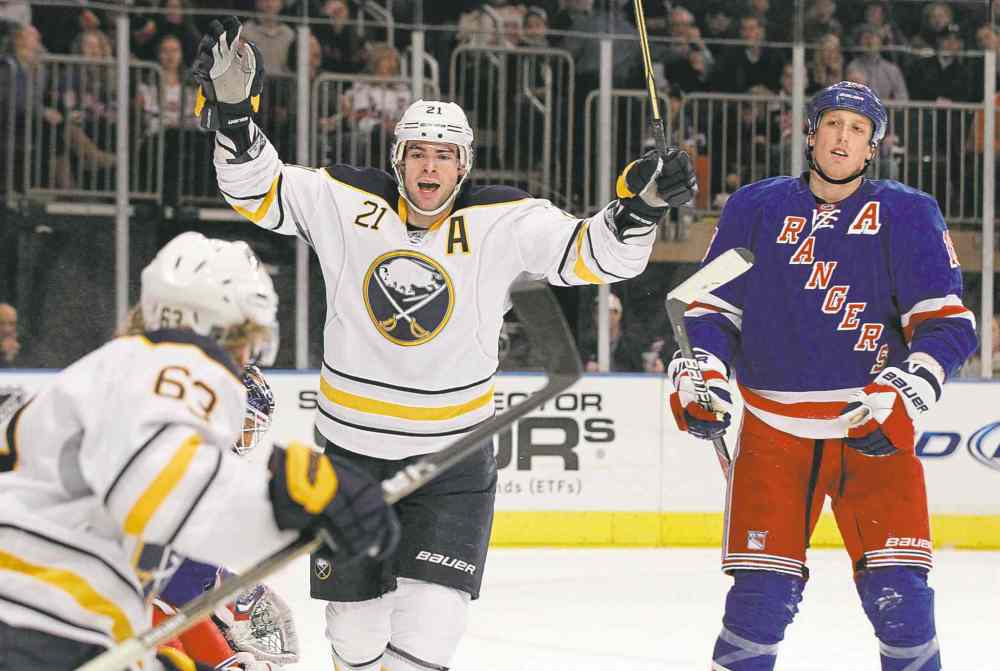New Jets may buck trends
Stats not flattering to Myers, Stafford and Tlusty but context needs to be considered -- they were on bad teams
Advertisement
Read this article for free:
or
Already have an account? Log in here »
To continue reading, please subscribe:
Monthly Digital Subscription
$1 per week for 24 weeks*
- Enjoy unlimited reading on winnipegfreepress.com
- Read the E-Edition, our digital replica newspaper
- Access News Break, our award-winning app
- Play interactive puzzles
*Billed as $4.00 plus GST every four weeks. After 24 weeks, price increases to the regular rate of $19.00 plus GST every four weeks. Offer available to new and qualified returning subscribers only. Cancel any time.
Monthly Digital Subscription
$4.75/week*
- Enjoy unlimited reading on winnipegfreepress.com
- Read the E-Edition, our digital replica newspaper
- Access News Break, our award-winning app
- Play interactive puzzles
*Billed as $19 plus GST every four weeks. Cancel any time.
To continue reading, please subscribe:
Add Winnipeg Free Press access to your Brandon Sun subscription for only
$1 for the first 4 weeks*
*$1 will be added to your next bill. After your 4 weeks access is complete your rate will increase by $0.00 a X percent off the regular rate.
Read unlimited articles for free today:
or
Already have an account? Log in here »
Hey there, time traveller!
This article was published 28/02/2015 (3868 days ago), so information in it may no longer be current.
The Winnipeg Jets have three new faces on their roster. Through the trade market Kevin Cheveldayoff has acquired defender Tyler Myers, and wingers Drew Stafford and Jiri Tlusty.
What do the numbers say these new players bring to the Jets?
On the surface, Myers would not be the poster boy for today’s new statistics.

During his time in Buffalo, the Sabres directed fewer shots at their opponent’s net than the number directed at their own for the minutes Myers was on the ice. On average, the Sabres performed better in statistics with Myers on the bench.
It has, however, not always been that way. In his rookie season, Myers performed exceptionally well. The young defender scored above the average pace for a top-pairing defender for both even strength and power-play situations.
His two-way numbers were not too shabby either. As a 19-year-old, the Sabres controlled 50.1 per cent of shot attempts with Myers on the ice. Myers accomplished this without taking sheltered minutes typical of a rookie defender. He took an above average number of defensive-zone starts while facing the opposition’s top lines more often than any other Sabre.
The following season Myers’ scoring dropped a little, but his impact on shot metrics improved. He took an even larger share of defensive-zone starts and the Sabres controlled 53.7 per cent of shot attempts with Myers on the ice, despite only controlling 49.7 with Myers on the bench.
Then something changed.
The Sabres started to crumble, leading to their management’s eventual shift into rebuilding the team. The Sabres started to tank, and so did Myers — at an accelerating rate.
However, statistics should never be separated from the context they arise in.
This is true with the eye-test too. After all, when one watches the game and evaluates a player, it is to look at how a player impacts the results. Statistics are simply a tally of the results. Context affects both, equally.
The Sabres have been a very poor team in performance. Already the 2014-15 Sabres have set the record for the worst shot attempt differential since these numbers have been available to the public.
It would be prudent to assume such an environment would have an impact on play. Players are human beings with human psyches. Confidence and other emotions can impact their play, and in turn, their impact on results.
Myers’ value lies in his potential. The Jets have gambled on Myers to return to the impact player he once was.
So far, the gamble looks good, with the Jets controlling 51.3 per cent of shot attempts with Myers on the ice. For context, Myers only had four games this season over 50 per cent as a defender prior to being traded. The Jets control more with Myers on the bench than on the ice, but those minutes have been mostly dominated by Jacob Trouba and Dustin Byfuglien, two analytical studs.
Stafford came from the same environment as Myers.
Stafford has never been a dominant play-driver like Myers was in his first two seasons. The winger though has been a competent point scorer.

In both the 2010-11 and 2011-12 season Stafford picked up paced above the 2.0 even-strength points per 60-minute pace average for top line forwards.
Playing on a weaker possession team led to less chances, and therefore less points. Stafford’s scoring took a hit, dropping to about 1.6 points per sixty minutes.
While Tlusty comes from a different team, his story is not dissimilar from Stafford’s.
Like Stafford, Tlusty has never been either a major play-driver nor an anchor for shot metrics. He has however been a capable point producer, especially in even-strength goal scoring.
Since the 2011-12 season, Tlusty has averaged 0.9 goals for every sixty minutes of even strength time. For context, the only Jets to outpace this production are Andrew Ladd and former Jet Evander Kane.
Tlusty’s goal scoring has dipped this season, although his even-strength shooting percentage is much lower than his historical average. It is more likely Tlusty shoots at his historical norm for the remainder of the season than his recent lows.
When Cheveldayoff bought in these players, it was not without risk. Myers was a player struggling on a suffering team. Stafford’s point scoring dropped under the same circumstances. Tlusty’s normally high-end goal scoring has faltered.
However, there remains untapped potential in Myers that may be reinvigorated in a new environment. It is also more likely that Stafford’s and Tlusty’s scoring return to their historical norm than their recent paces.
After concluding his career as a musician and being reinvigorated by the return of the Jets, Garret Hohl is now finding his way as an undergrad, studying statistics and economics and has immersed himself in the hockey blogosphere.
Twitter: @GarretHohl







